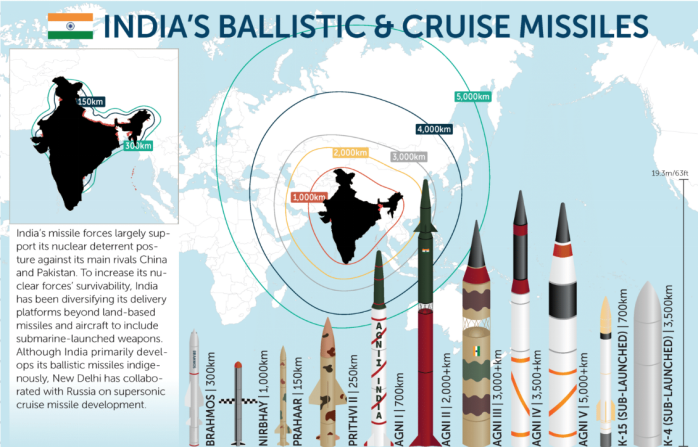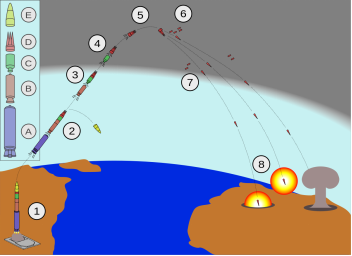- Courses
- GS Full Course 1 Year
- GS Full Course 2 Year
- GS Full Course 3 Year
- GS Full Course Till Selection
- Answer Alpha: Mains 2025 Mentorship
- MEP (Mains Enrichment Programme) Data, Facts
- Essay Target – 150+ Marks
- Online Program
- GS Recorded Course
- Polity
- Geography
- Economy
- Ancient, Medieval and Art & Culture AMAC
- Modern India, Post Independence & World History
- Environment
- Governance
- Science & Technology
- International Relations and Internal Security
- Disaster Management
- Ethics
- NCERT Current Affairs
- Indian Society and Social Issue
- NCERT- Science and Technology
- NCERT - Geography
- NCERT - Ancient History
- NCERT- World History
- NCERT Modern History
- CSAT
- 5 LAYERED ARJUNA Mentorship
- Public Administration Optional
- ABOUT US
- OUR TOPPERS
- TEST SERIES
- FREE STUDY MATERIAL
- VIDEOS
- CONTACT US
Exo-atmospheric interceptors destroyed ‘99% of missiles’ fired by Iran
Exo-atmospheric interceptors destroyed ‘99% of missiles’ fired by Iran
17-04-2024

Israel on Sunday said its air-defence system involving exo-atmospheric interceptors destroyed ‘99% of missiles’ fired by the Islamic Republic of Iran.
What are the Exo-Atmospheric Missiles ?
- Exo-atmospheric missiles, also known as anti-ballistic missiles (ABMs), are surface-to-air missiles designed to counter incoming ballistic missiles.
- These missiles operate beyond the Earth's atmosphere and are equipped with advanced technology, including infrared sensors and radar systems, to detect and track incoming ballistic missiles and terminate them.
Key Features of Exo-Atmospheric Missiles:
- Intercepting Ballistic Threats: Exo-atmospheric missiles are specifically designed to intercept and destroy any type of ballistic threat during the mid-course or terminal phase of their trajectory. Their primary purpose is to counter Intercontinental Ballistic Missiles (ICBMs).
- Hypersonic Speed and Guidance Systems: These missiles travel at hypersonic speeds, utilizing advanced and sophisticated guidance missile systems to accurately maneuver and intercept targets traveling at extremely high speeds.
- Inertial Navigation System: Exo-atmospheric missiles are guided by an inertial navigation system that is continuously updated during flight using contour maps stored in the system's computerized memory.
- A contour map is a way to represent functions with a two-dimensional input and a one-dimensional output. They are also known as topographic maps.
- Three-Stage Solid Rocket Booster: The missiles use 3-stage solid rocket boosters to exit the Earth's atmosphere at nearly hypersonic speeds. Once in space, the missiles activate their sensors to identify and track the incoming target.
- Inbuilt Rocket Motor: Each missile is equipped with an inbuilt rocket motor that allows it to navigate towards the target with exceptional accuracy.
FAQs:
Missiles of India

Q: What are Ballistic Missiles?
- Ballistic missiles are rocket-propelled, self-guided weapon systems that can carry conventional or nuclear munitions.
- They are launched directly into the upper layers of the Earth's atmosphere and can travel outside the atmosphere, where the warhead separates from the missile and falls toward a predetermined target.
- Ballistic missiles can be launched from aircraft, ships, submarines, and land.
Q: What is a Cruise Missile?
- A cruise missile is a self-propelled, unmanned guided vehicle that uses aerodynamic lift to sustain flight for most of its path.
- Its main purpose is to deliver a payload to a target with high precision over long distances.
- Cruise missiles can be launched from many ground, air, sea, and submarine platforms.
- They fly at low altitudes and stay within the Earth's atmosphere throughout their trajectory.
|
Some of the best cruise missiles in service with various nations include:
- Tomahawk: Known for its long-range capabilities, accuracy, and versatility
BrahMos: A joint venture between India and Russia, this is the fastest cruise missile in world in operation
Must Check: Best IAS Coaching In Delhi



